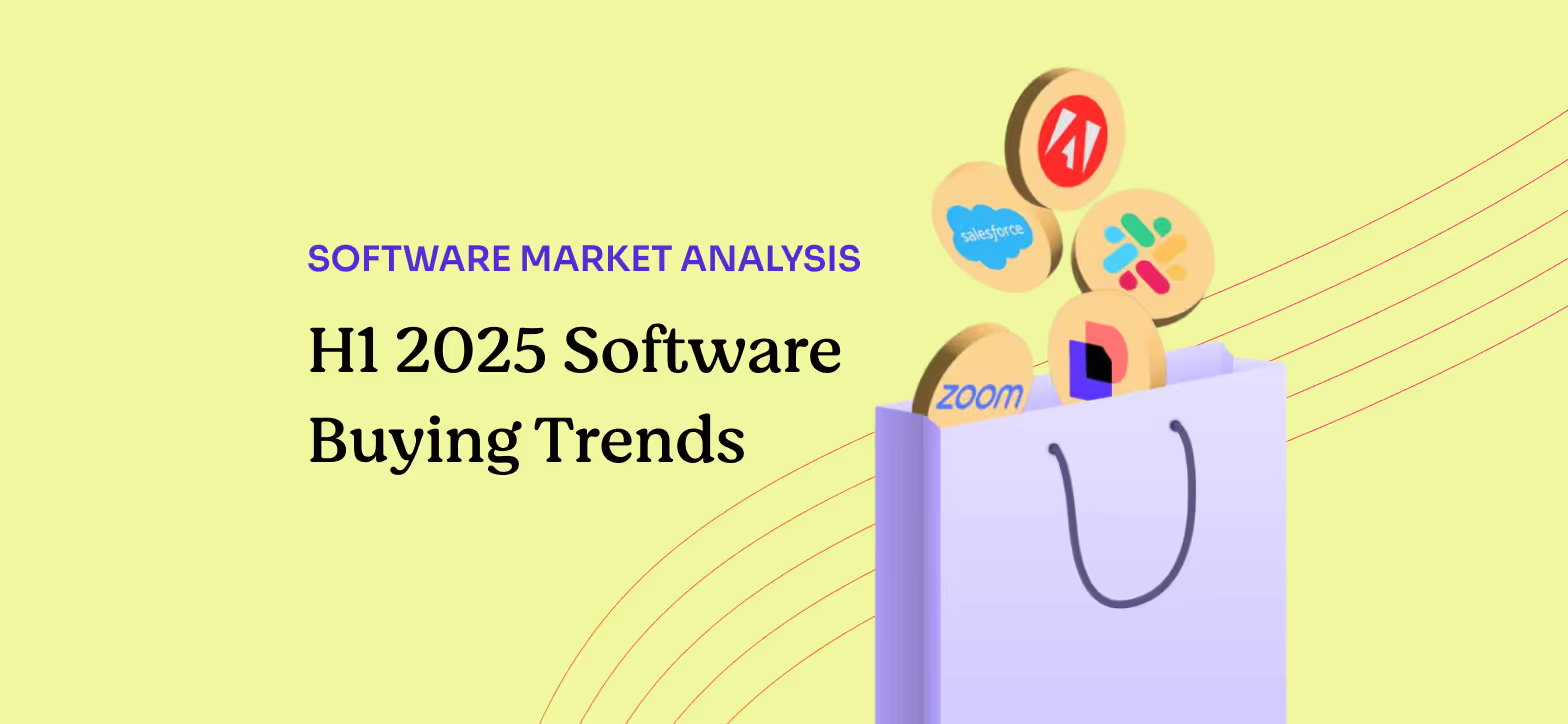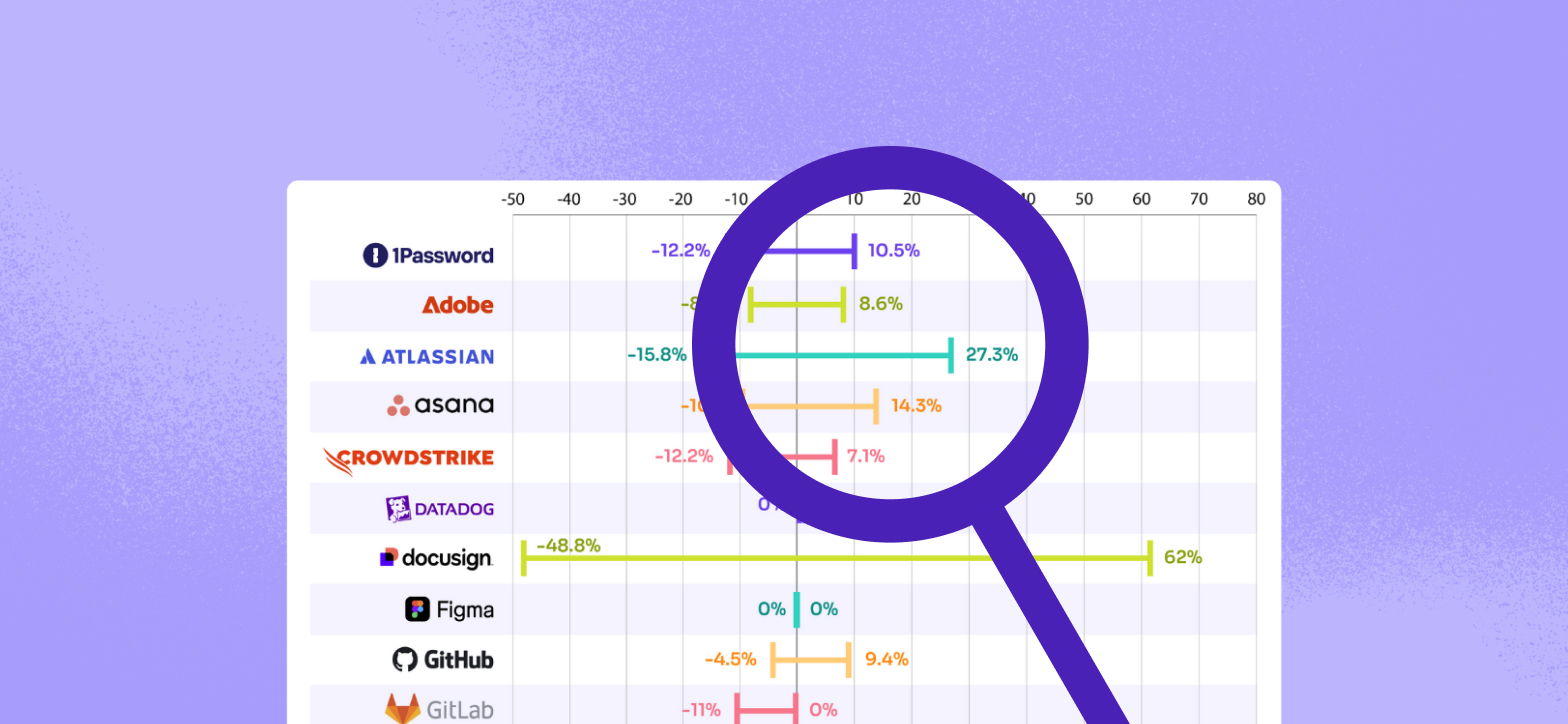Remember when "nobody got fired for buying IBM"? Those days are long gone.
Today's software buyers face a dizzying array of choices, aggressive vendors, and the constant pressure to do more with less. The good news? You don’t have to fly blind anymore.
We've just released our H1 2025 Software Buying Trends Report, and the insights might surprise you. After analyzing $14B in spend under management, we continue to see that the software landscape isn't just changing, it's fundamentally being reshaped.
Before we dig-in more, I want to say - at Tropic, we focus more on supporting SMB, Growth, and Mid-Market companies, because we believe software buying shouldn't just favor the enterprise. Our goal is to level the playing field and help our customers turn software procurement into a strategic advantage. With that, we focused solely on what companies with 1-1000 employees are doing for this issue of our Software Buying Trends report.
The State of Software Spend in 2025
Let's start with the numbers that matter. Total software spending increased roughly 15% year-over-year, but here's where it gets interesting: there was a 9% decrease between Q1 and Q2 2025. Some seasonality can account for that difference, but it also shows that while companies are still spending, they are getting more select about what they’re spending on.
Mid-market companies (251-999 employees) spent an average of $4.4M annually on software, up 4% from last year. That is about $7,300 per employee. Growth-stage companies actually decreased their average spend by 12% to $1.4M, while SMBs increased by 11% to $1.05M.
What's driving these shifts? Companies are finally taking a hard look at their tech stacks and making tough decisions about what stays and what goes.
The Tools That Matter (And the Ones Losing Steam)
Salesforce still reigns as the most used piece of software with a 64% adoption rate, followed by Zoom at 56% and Slack at 53%. But adoption rates don't tell the whole story. While Adobe and Atlassian saw healthy growth (6.89% and 10.90% respectively), others are showing signs of fatigue or, maybe they have simply reached their saturation points?
The real action is in the fastest-growing category. Put simply, it’s all about AI - and when it comes to those growing most quickly, it’s AI-native capabilities that are driving it:
- Cursor: 2,741% growth
- Anthropic: 2,030% growth
- Clay: 468% growth
This isn’t surprising, as we found 86% of organizations plan to implement or scale AI by 2026. But before you rush to add these tools to your stack, consider that organizations are still struggling to prove ROI from AI. Figure out what ROI means to you, and your organization, as you continue to bring on new tools.
The Not So Hidden Cost of Waiting
Here's a stat that should make every CFO pay attention: companies that negotiate six months before renewal save up to 39% more than those who wait. At 60 days out, you're still looking at 22% savings. Even 30 days makes a 14% difference.
With more than 30% of renewals happening in Q4, use this as your wake-up call. Don’t. Wait. Until. The. Last. Minute. That procrastination is expensive.
Where Money Hides in Your Tech Stack
One of our most fascinating findings involves pricing variability. For similar contracts at similar volumes, we found massive spreads in what companies pay:
- DocuSign: prices vary by up to 110%
- Atlassian: 43% spread between those in 25th and 75th percentile
- HubSpot: 35% variance
- Figma: 0% variance (what you see is what you get)
And to be clear, this is not showing volume discounts. This is about negotiation leverage and timing. The companies paying at the 25th percentile aren't necessarily bigger or buying more. They're often just better prepared.
The Shadow Spend Problem
OpenAI tops our list of shadow spend creators, followed by LinkedIn, Figma, and GitHub. These tools share a common trait: they're easy to expense, useful enough to spread organically, and expensive enough to matter when finance finally discovers them.
Taming your Shadow spend is not just about controlling costs, though we can all agree that’s important, it’s about missed opportunities, security risks, and so much more. Without formal contracts, you miss negotiated pricing, volume discounts, and favorable terms. That "free" tool your team loves could be costing you thousands in lost savings and opening you up for compliance issues.
What Smart Buyers Do Differently
The most successful companies in our dataset share three characteristics:
- They track everything. Not just contracts, but actual usage, variance, and value delivered. Companies using tools like Tropic to monitor spend variance catch issues before they become problems.
- They negotiate early and often. The "set it and forget it" approach to software contracts is dead. Smart buyers start renewal conversations six months out and aren't afraid to walk away.
- They think portfolio, not point solutions. Instead of optimizing each tool individually, they look at their entire stack. Sometimes paying more for one tool makes sense if it eliminates three others.
Why Does this All Matter?
The software landscape will only get more complex. AI tools will mature and consolidate. Legacy vendors will fight to maintain their position. New categories we haven't imagined yet will emerge.
But one thing won't change: the companies that treat software procurement as a strategic function—not an administrative task—will have a massive advantage. They'll spend less, get more value, and adapt faster to whatever comes next.
The data is clear. The playbook is proven. The only question is: will you use it?
Want to dive deeper into these insights? Download our full H1 2025 Software Buying Trends Report for benchmarks, detailed vendor analysis, and actionable strategies for optimizing your tech stack.
Related blogs
Discover why hundreds of companies choose Tropic to gain visibility and control of their spend.







.avif)